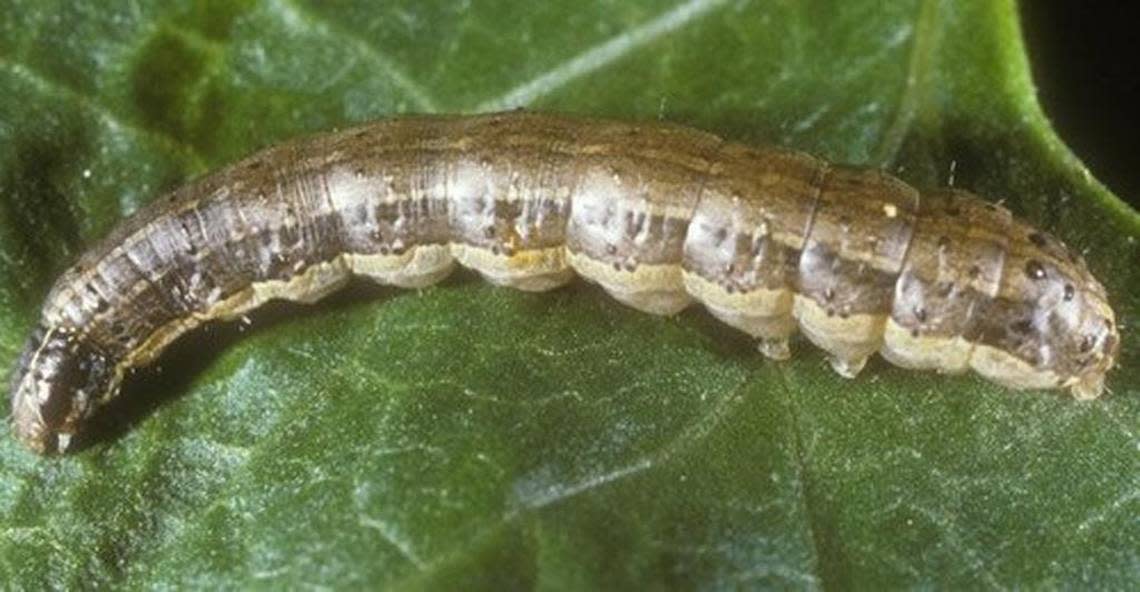Fall pests in SC are coming for your home and yard. These are the worst and how to keep them away

With fall beginning in a few weeks and temperatures cooling down — hopefully — here come more pests to deal with, in the house, in the yard and in the garden.
Various outside pests want to come inside so be looking for cockroaches, ants, spiders and the dreaded lady beetles that can look like the friendly and beneficial ladybug but are orange.
The beetles, officially the Asian Lady beetle, come in myriad patterns, some with a few spots, others with lots and still others will have no spots at all.
“Some residents have reported thousands of these beetles congregating on outside walls, windows, doors, porches and decks, especially on the sunny south and west side of buildings,” Clemson Extension Service said.
The real problem with this pest is when threatened it oozes liquid from its blood that smells terrible and stains what it touches.
And sadly mosquitoes are still around, hovering and biting and just being annoying.
To keep these pests outside, make sure doors, windows and screens are fitted properly and any cracks or holes in siding or foundation are sealed. Also, store pantry food in containers and get a dehumidifier. They don’t like dry.
You can also spray the exterior of your home with insecticide that will remain on a surface and kill bugs that crawl over it.
In Your Garden
Clemson Extension Service says cool-season crops such as cabbage and broccoli attract aphids and various caterpillar species, like cabbage loopers, cross-striped cabbageworm and diamondback moth caterpillars.
They have natural predators like the larvae of the aforementioned lady beetle, lacewings, syrphid flies, damsel bugs, and wasps. If the predators are not doing their job, you can buy insecticidal soap. Young caterpillars may be killed by a naturally occurring bacterium.
Good sanitation is key, the Extension Service says. Get rid of leftover plant debris.
Save Your Lawn
Your grassy yard is not immune from fall pests. Here come the armyworms, a caterpillar species that will eat up the blades of bermudagrass and tall fescue.
“Often noticed in late summer, these highly destructive caterpillars crawl through once pleasantly green areas, and in just a few hours, turn them into brown wastelands,” Clemson Extension says on its fact sheet.
But there’s more.
“Adult moths, which may be attracted by bright lighting, will lay up to 1,000 eggs in a single night,” the extension service says,
These eggs, white or cream and furry, are often found in various places such as grass blades, upright structures, and siding. Check your fence posts.
When they hatch, they spin silken threads, disperse and get to eating.
They go through various stages until they burrow into grass and soil and come out 10 to 20 days later as adults, typically an inch in length with a drop-shaped mark in the middle of the forewing.
In the larva stage, their damage looks like it would in a drought, followed by a scalped lawn with only stems left.
Here’s how to fight back: mix 1-2 tablespoons of lemon-scented dish detergent in 1 -2 gallons of water and mix until it gets sudsy. Slowly pour over a 1 square yard section of healthy turfgrass directly next to damaged areas.
“Armyworms will emerge within 10 minutes of pouring,” Clemson said.
Sounds like a horror movie.
Various insecticides are also available.





